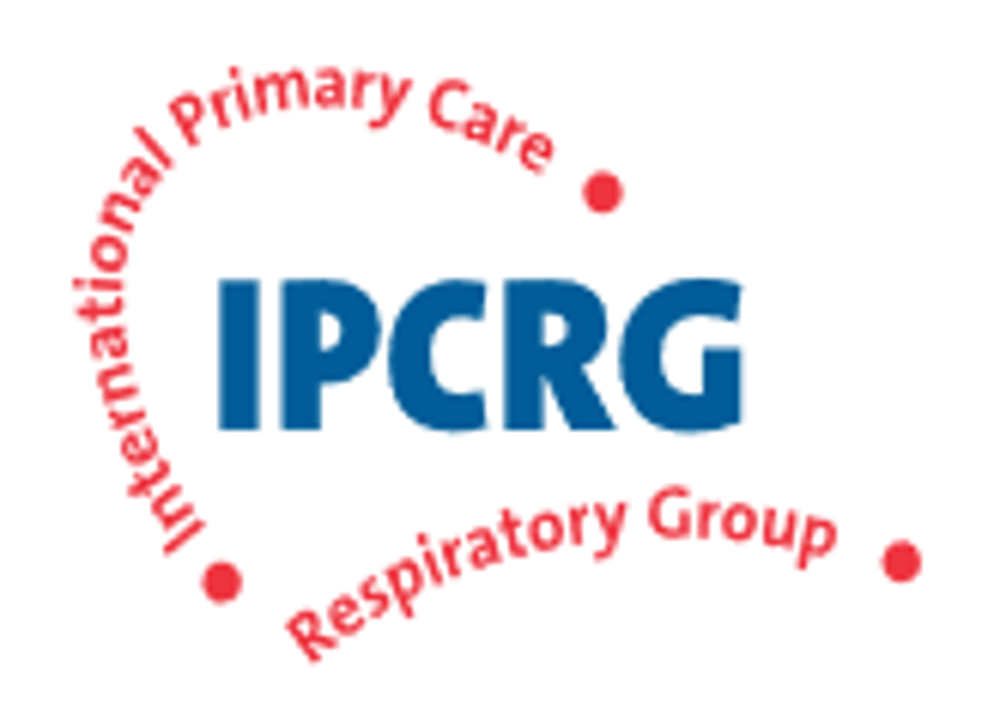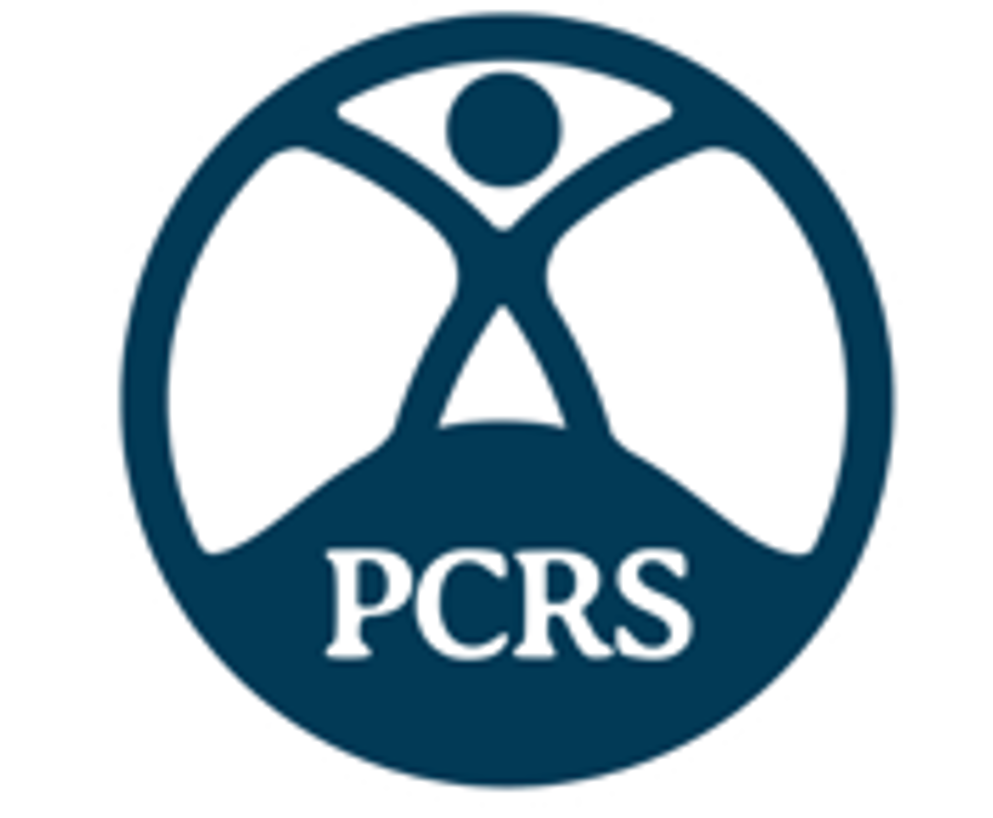What is VBA?
Very Brief Advice (VBA) on smoking is provided by the National Centre for Smoking Cessation and Training (NCSCT) and funded by the Department of Health in the UK. Discover:
- The essential elements of VBA – ASK, ADVISE, ACT.
- Resources to help you deliver effective VBA.
- An overview of the impact of the coronavirus disease 2019 (COVID-19) pandemic on smoking cessation.
ASK, ADVISE, ACT
What may surprise you is that Very Brief Advice does not advise smokers to stop, or recommend that you ask how much they smoke or even if they want to stop. It is designed as a trigger and works at any point during a consultation about any other health matter. There are three elements to Very Brief Advice1:
- establishing and recording smoking status (ASK)
- advising on how to stop (ADVISE)
- offering help (ACT)
ASK
“Have you used tobacco at all in the last year?” or “I can see from your record that you have used tobacco recently. Is that still the case?”
HCPs should ‘ASK’ all patients about tobacco use at each point of clinical contact. Tobacco use also includes using smokeless tobacco and smoking status should always be documented1. Non-judgmental and open questions work best here.
ADVISE
"Do you know the best way of stopping using tobacco or reducing its harm? We know from research studies that the best way of stopping using tobacco is through the use of stop tobacco medicines combined with regular help, support and encouragement, especially in the first 4 weeks and ideally for 3 months of an attempt."
HCPs should ‘ADVISE’ about effective ways to quit smoking and if necessary, about the harms of tobacco. In most countries public health programmes use the media to communicate the harm caused by tobacco products. In some cases this approach again can be perceived as nagging and unsupportive so HCPs should base their advice on an individual patient basis and/or on local population awareness1.
ACT
“Would you like to talk about the options available to help with your tobacco use today?”
If answer is No: “That’s OK. Could I ask your permission to talk about this again next time we meet in case you have changed your mind? If you do reconsider before then I would be happy to see you for an appointment to talk about this more.”
If answer is Yes: “That’s great, here are some of the options that are open to you now...”
HCPs should ‘ACT’ according to the patient’s response to the ‘ADVISE’ step. The most effective way to quit smoking and maintain long-term is with a combination of behavioural support from a trained clinician and use of a first line quit medication1. Many countries have options for behavioural support in place and a choice of pharmacotherapies or nicotine replacement therapies.
In order to ‘ACT’ it is important for HCPs to be aware of the availability of the following in their practice1:
- Carbon monoxide (CO) monitoring – exhaled CO testing prior to referral is a low cost way of monitoring success for both physician and patient if available. For advice on how to use a carbon monoxide monitor during a patient consultation from Dr Noel Baxter, watch this video (link will take you to an external site)
- Referrals to stop smoking services – ensure that you are aware of the services available locally which will ideally offer both behavioural and pharmacotherapy interventions from fully trained staff (do make sure referrals happen and ask for feedback from the service)
- Appropriate treatments to prescribe – ensure that you know which treatments are available so you can assure patients of their value and safety, you may be able to offer an initial prescription of nicotine replacement therapy (NRT) patches with a secondary short acting product for breakthrough cravings and explore options with the patient for over the counter (OTC) or prescribed free and private treatments
- Written material/contact numbers – to show your support
- More than Very Brief Advice – ideally yourself or a colleague will have been trained and updated to provide brief behavioural and pharmacotherapy interventions for tobacco which may include motivational interviewing
HCPs should explain to patients that they will have greater success if they see a health professional in addition to treatment - taking stop tobacco medicines OTC without support is no more effective than an unassisted quit and could be unsuccessful due to under dosing, poor technique and terminating the course far too soon1.
Sources of help for delivering Very Brief Advice
What resources are available to help HCPs give Very Brief Advice? In addition to the patient case-based video scenarios in this Learning Zone, explore the IPCRG Very Brief Advice desktop helper, the NCSCT Very Brief Advice training module and the PCRS tobacco dependency pragmatic guide (links will take you to the external sites).
Medthority/IPCRG VBA for tobacco dependence Learning Zone
Visit the How to deliver VBA section of this Learning Zone to view physician-patient scenarios demonstrating how VBA can be used in different patient types.
IPCRG Helping patients quit tobacco desktop helper No. 4
This is a comprehensive resource in English which describes the principles of Very Brief Advice, gives examples of what to say to patients at all three points (ASK, ADVISE, ACT) and details the benefits of quitting and gives medication advice1.
NCSCT Very Brief Advice training module
The National Centre for Smoking Cessation and Training (NCSCT) is a UK based training and assessment organisation. They host a short training module on how to deliver Very Brief Advice on smoking. This free resource has been developed for HCPs to help increase the quality and frequency of Very Brief Advice given to patients who smoke and is relevant for anybody who comes into contact with smokers. This online training has been customised for a number of different countries and organisations and there is also an Open Access Course.
In addition, the NCSCT also offer specific training modules on:
- Very Brief Advice on smoking for pregnant women
- Very Brief Advice on second-hand smoke: promoting smoke-free homes and cars
- E-cigarettes: a guide for healthcare professionals
- Stop smoking medications
And many briefings which include:
- Very Brief Advice on smoking for ambulance clinicians
- Smoking cessation intervention for people with severe mental ill health
- Very Brief Advice on smoking for dental patients
Primary Care Respiratory Society (PCRS) pragmatic guide
The PCRS is a multidisciplinary UK professional society focused on developing a holistic, patient centred and integrated approach to caring for people with respiratory conditions. The tobacco dependency pragmatic guide is a practical, immediately implementable, evidence-based framework to enable healthcare professionals to routinely identify smokers, encourage and support a quit attempt2.
- Does smoking increase the risk of developing symptomatic COVID-19?
- Does smoking increase severe or critical outcomes?
- Finding factors associated with COVID-19 related death using OpenSAFELY
- The impact of early COVID-19 studies
- Could nicotine have a protective effect against COVID-19?
- Role of HCPs in reducing smoking dependency during the COVID-19 pandemic
WHO 2020 literature review on COVID-19 and smoking
In June 2020, an extensive literature review on the WHO Framework Convention on Tobacco Control (FCTC) concluded that smoking was associated with an increased severity of disease and death in hospitalised COVID-19 patients and called for more research, especially population-based studies, to quantify the actual risk to smokers of hospitalisation with COVID-19 or of infection with SARS-CoV-23,4.
Does smoking increase the risk of developing symptomatic COVID-19?
From 24 March to 23 April 2020, guided self-reported data was logged daily by UK users of the Zoe COVID-19 Symptom Study app and subsequently analysed in a large UK prospective cohort study (N = 2,401,982)6. A major strength of this study was its ability to capture smoking status more accurately than studies using routine historical administrative records or with significant level of missing data6.
Compared with non-smokers who reported testing positive for SARS-CoV-2 infection, smokers have a greater symptom burden and were more likely to require hospitalisation6.
The main findings were that smokers were more likely to report the classic symptoms associated with COVID-19: fever, new persistent cough, breathlessness. Smokers also had a higher chance of reporting more symptoms, a surrogate of disease severity, and indicating an impact of smoking on disease severity.
This study suggests that efforts that address tobacco dependency should be included in strategies for the COVID-19 pandemic in an effort to decrease the burden on individual smokers and the healthcare system6.
Does smoking increase severe or critical outcomes?
In a systematic literature search of online databases (N = 517,020) from several countries, smoking was also associated with severe or critical outcomes, an increased risk of admission to ICU, and mortality in COVID-19 patients7.
Specifically, the meta-analysis found a statistically significant association between smoking history and COVID-19 severity, (OR 1.55, 95% CI: 1.41–1.71, P<0.001). Smoking was also significantly associated with the risk of admission to intensive care unit (OR 1.73, 95%CI: 1.36–2.19, P = 0.006), increased mortality (OR 1.58, 95%CI: 1.38–1.81, P<0.001), and critical diseases composite endpoints (OR 1.61, 95%CI: 1.35–1.93). Age (P = 0.004), hypertension (P = 0.007), diabetes (P = 0.029), and chronic obstructive pulmonary disease (P = 0.001) were found to be covariates that affect this association7.
Finding factors associated with COVID-19 related death using OpenSAFELY
OpenSAFELY is a secure health analytics platform that has aggregated detailed longitudinal patient data from 40% of patients in England using existing primary care electronic health records. By pseudonymously linking 17 million records to COVID-19 related deaths, the collected data could be used to examine the factors associated with COVID-19 related death8.
Grouping patients by smoking status into current-, former- and never-smokers, the results showed that there was a higher risk of death in current smokers 1.14 (95% CI, 1.05–1.23) compared with never-smokers of 1.00 (reference group), adjusted for age and sex.
The risk of death in current smokers decreased to 0.89 (95% CI, 0.82–0.97) when fully adjusted to covariates, including age, sex, and BMI8. This change in hazard ratio largely resulted from an adjustment for chronic respiratory disease. However, as chronic respiratory disease and other comorbidities can be caused by smoking, the fully adjusted smoking hazard ratio could not be interpreted causally. A model adjusted for demographic factors was instead used to highlight a small increased risk in current smokers of a non-significant hazard ratio of 1.07 (95% CI, 0.98–1.18). This small difference does not however support the proposed protective effect of nicotine. As the COVID-19 pandemic progresses, more data will be accumulated to further elucidate the risk of smoking8.
The impact of early COVID-19 studies
Publication pressure, and the urgency to provide answers, led to the rapid dissemination of studies designed to find correlations between smoking and COVID-19, without establishing causality or receiving appropriate peer review9.
To date, there is little causal evidence to suggest that smokers are protected against SARS-CoV-2 infection9.
Subsequently shared through various media, the implied causal relationship resulted in confusion among the public, scientists, and medical community9. This was further compounded by the tobacco industry downplaying the risks of smoking9.
A notable example was the reporting of studies proposing an inverse relationship between smoking and COVID-19, resulting in increased tobacco consumption in China and France9. These methodologically flawed cross-sectional studies, containing incomplete data, selection bias, and misclassification bias, were not suitable for assessing the risks smoking6,9.
Could nicotine have a protective effect against COVID-19?
As SARS-CoV-2 virus is known to primarily enter human cells by binding to ACE2 receptors10, an increased expression in smokers could lead to a greater number of viral receptors through which SARS-CoV-2 virus can enter the body and an amplification of disease severity or adverse outcomes11.
However, while it has been proposed that smoking may modulate the expression of ACE2 receptors, there have been contrasting findings on relation between angiotensin converting enzyme 2 (ACE2) receptors and cigarette exposure11.
Studies prior to the pandemic found evidence that cigarette smoke exposure led to a down regulation of ACE2 receptor expression11. However more recent studies have found a consistent and dose-dependent correlation between smoking history and upregulated ACE2 expression in the respiratory tract12. Additionally, refraining from smoking for at least twelve months is associated with an ~40% decrease in ACE2 expression12.
As cigarette smoke contains many individual compounds and the factors that mediate the overall susceptibility to SARS-CoV-2 infections are still poorly understood, larger, peer-reviewed, epidemiological and characterisation studies will be needed to definitively understand the effect of nicotine and ACE2 expression on COVID-19 severity.
Role of HCPs in reducing smoking dependency during the COVID-19 pandemic
Substantial interest from respondents to an online survey on the best methods of providing smoking cessation advice and support during the pandemic suggests that there may be an increased receptiveness to quitting smoking13.
In the online survey of adults in Australia (N = 604) and the UK (N = 600), approximately half of the respondents shared an interest in receiving personal counselling and/or participating in a text support programme during the month following the survey; the most popular form being by email. Three-quarters also expressed an interest in receiving free, home-delivered nicotine replacement therapy (NRT) suggesting that this may be a useful method for assisting quit attempts during the pandemic13.
The survey also identified that individuals’ doctors/GPs and the Government were the most popular sources of information about smokers’ COVID-related risks13. This highlights the essential need for healthcare physicians (HCPs) to share the growing evidence that current smokers are more likely to become infected and have worse outcomes, 6,9.
It is important that healthcare physicians help to dispel any lingering misbeliefs among the general public about the protective nature of smoking against COVID-199.
While HCPs have always been important in providing smoking cessation advice, their role has a renewed urgency during the COVID-19 pandemic9. Effective and evidence-based VBA interventions mean this can be done seamlessly at the end of a consultation.
Although face-to-face cessation support may continue to be limited, primary HCPs can point patients to the availability of support at a distance, including telephone quit lines or eHealth interventions. Prominently displayed material in the waiting room can inform patients about the harmful relationship between smoking, COVID-19 and other serious illness. Primary healthcare providers are also in a good position to bring up the topic of COVID-19 and smoking in consultations with youth and young adults9.
To find out more about tobacco dependency during the COVID-19 pandemic, click here to watch GP Dr Noel Baxter and pharmacist Darush Attar-Zadeh host ‘The impact of nicotine and smoking in COVID-19 and respiratory diseases (asthma and COPD)’ webinar.
Click here to learn more about pharmacotherapies for treating tobacco dependency.
References
- The International Primary Care Respiratory Group (IPCRG). Desktop Helper No. 4 - Helping patients quit tobacco - 3rd edition. https://www.ipcrg.org/desktophelpers/desktop-helper-no-4-helping-patients-quit-tobacco-3rd-edition. Accessed 29 April 2021.
- Primary Care Respiratory Society (PCRS). Tobacco dependency pragmatic guide. 2020. https://www.pcrs-uk.org/resource/tobacco-dependency-pragmatic-guide. Accessed 29 April 2021.
- WHO. Smoking and COVID-19. 2020. https://www.who.int/news-room/commentaries/detail/smoking-and-covid-19. Accessed 16 April 2021.
- Huber L, Cuadrado U, Fernandez-Megina R, Raw M, Marquizo AB, Romeo-Stuppy K. The impact of COVID-19 on the WHO FCTC, cessation, and tobacco policy. Tobacco Induced Diseases. 2021;18(December). doi:10.18332/TID/130779.
- WHO. WHO | Advancing in tobacco control amidst the COVID-19 pandemic. WHO. 2020. http://www.who.int/fctc/mediacentre/news/2020/advancing-in-tobacco-control-amidst-the-covid-19-pandemic/en/. Accessed 16 April 2021.
- Hopkinson NS, Rossi N, El-Sayed-moustafa J, Laverty AA, Quint JK, Freidin M, et al. Current smoking and COVID-19 risk: Results from a population symptom app in over 2.4 million people. Thorax. 2020. doi:10.1136/thoraxjnl-2020-216422.
- Zhang H, Ma S, Han T, Qu G, Cheng C, Uy JP, et al. Association of smoking history with severe and critical outcomes in COVID-19 patients: A systemic review and meta-analysis. Eur J Integr Med. 2021;43:101313.
- Williamson EJ, Walker AJ, Bhaskaran K, Bacon S, Bates C, Morton CE, et al. Factors associated with COVID-19-related death using OpenSAFELY. Nature. 2020;584(7821):430–436.
- van Westen-Lagerweij NA, Meijer E, Meeuwsen EG, Chavannes NH, Willemsen MC, Croes EA. Are smokers protected against SARS-CoV-2 infection (COVID-19)? The origins of the myth. npj Primary Care Respiratory Medicine. 2021;31(1):1–3.
- Wrapp D, Wang N, Corbett KS, Goldsmith JA, Hsieh CL, Abiona O, et al. Cryo-EM structure of the 2019-nCoV spike in the prefusion conformation. Science (80- ). 2020;367(6483):1260–1263.
- Usman MS, Siddiqi TJ, Khan MS, Patel UK, Shahid I, Ahmed J, et al. Is there a smoker’s paradox in COVID-19? BMJ Evidence-Based Med. 2020;0. doi:10.1136/bmjebm-2020-111492.
- Smith JC, Sausville EL, Girish V, Yuan M Lou, Vasudevan A, John KM, et al. Cigarette Smoke Exposure and Inflammatory Signaling Increase the Expression of the SARS-CoV-2 Receptor ACE2 in the Respiratory Tract. Dev Cell. 2020;53(5):514-529.e3.
- Pettigrew S, Jun M, Roberts I, Bullen C, Nallaiah K, Rodgers A. Preferences for tobacco cessation information and support during Covid-19. J Addict Med. 2020;14(6):E362–E365.
of interest
are looking at
saved
next event




